Academic books
These are academic textbooks at the graduate and post-graduate levels aimed particularly at students and researchers.
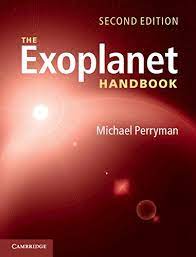
The Exoplanet Handbook
Michael Perryman
Publisher: Cambridge University Press
ISBN: 978110830416
Summary: Planet formation, exoplanet interiors and atmospheres, and habitability are discussed, providing in-depth coverage of our knowledge to date. Comprehensively updated from the first edition, it includes instrumental and observational developments, in-depth treatment of the new Kepler mission results and hot Jupiter atmospheric studies, and major updates on models of exoplanet formation.
Read more of the publisher’s summary here.
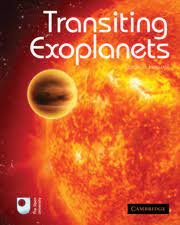
Transiting Exoplanets
Carole Haswell
Publisher: Cambridge University Press
ISBN: 9780521191838
Summary: The methods used in the detection and characterisation of exoplanets are presented through the study of transiting systems in this unique textbook for advanced undergraduates. From determining the atmospheric properties of transiting exoplanets to measuring the planetary orbit’s alignment with the stellar spin, students will discover what these measurements imply for reinvigorated theories of planet formation and evolution. Worked examples and exercises with full solutions help students to assess their understanding of concepts and results.
Read more of the publisher’s summary here.
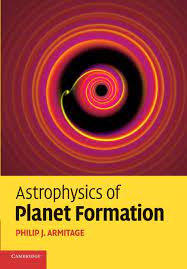
Astrophysics of Planet Formation
Phil Armitage
Publisher: Cambridge University Press
ISBN: 9781108344227
Summary: Written for beginning graduate students, this textbook provides a basic understanding of the astrophysical processes that shape the formation of planetary systems. It begins by describing the structure and evolution of protoplanetary disks, moves on to the formation of planetesimals, terrestrial and gas giant planets, and concludes by surveying new theoretical ideas for the early evolution of planetary systems.
Read more of the publisher’s summary here.
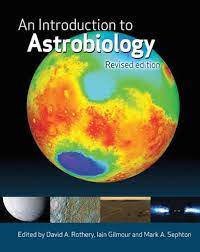
An Introduction to Astrobiology
Edited by D.A. Rothery, I. Gilmour, M.A. Sephton
Publisher: Cambridge University Press
ISBN: 9781108430838
Summary: A textbook designed for introductory university courses in astrobiology. It provides a detailed examination of how life may have arisen on Earth and looks at fossil evidence of early life. The evidence for possible life on Mars is reviewed in detail and the potential for life on Europa and Titan is also examined. The possibility of life in exoplanetary systems is considered and the book concludes with a discussion of the search for extraterrestrial intelligence.
Read more of the publisher’s summary here.
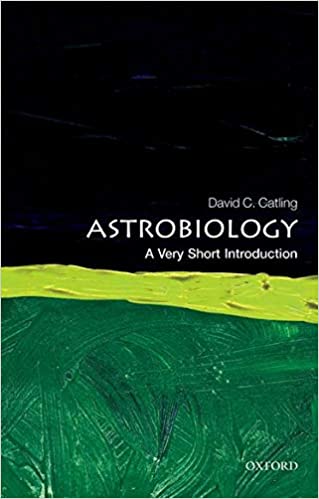
Astrobiology – A Very Short
Introduction
David Catling
Publisher: Oxford University Press
ISBN: 9780199586455
Summary: Astrobiology: A Very Short Introduction explores some of the big unanswered questions about the universe, considers the origins of life on Earth and its evolution, and brings together the ideas of microbiologists, astronomers, planetary scientists, and geologists. It introduces the origins of astrobiology and demonstrates its impact on current astronomical research and potential future discoveries.
Read more about here.
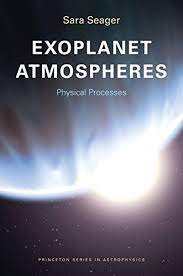
Exoplanet Atmospheres – Physical Processes
Sara Seager
Publisher: Princeton University Press
ISBN: 9780691146454
Summary: This is the first textbook to describe the basic physical processes–including radiative transfer, molecular absorption, and chemical processes–common to all planetary atmospheres, as well as the transit, eclipse, and thermal phase variation observations that are unique to exoplanets.
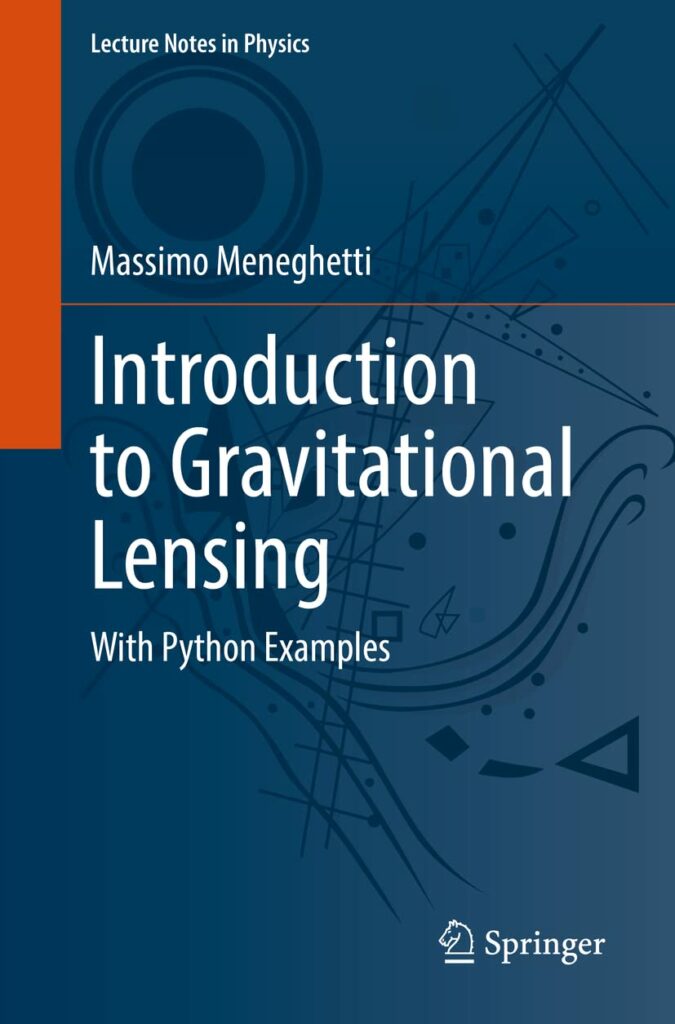
Introduction to Gravitational Lensing: With Python Examples
Massimo Meneghetti
Publisher: Springer Verlag
ISBN: 978-3-030-73582-1
Summary: This book introduces the phenomenology of gravitational lensing in an accessible manner and provides a thorough discussion of the related astrophysical applications. It is intended for advanced undergraduates and graduate students who want to start working in this rapidly evolving field. This includes also senior researchers who are interested in ongoing or future surveys and missions such as DES, Euclid, WFIRST, LSST. The reader is guided through many fascinating topics related to gravitational lensing like the structure of our galaxy, the searching for exoplanets, the investigation of dark matter in galaxies and galaxy clusters, and several aspects of cosmology, including dark energy and the cosmic microwave background.
Read more about here.
Books of special topics
These are aimed at the postgraduate researcher level and provide a deeper technical understanding of highly specialized topics.
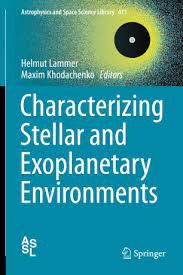
Characterizing Stellar and Exoplanetary Environment
Edited by H. Lammer and M. Khodachenko
Publisher: Science Library, Volume 411; Springer Switzerland
ISBN 978-3-319-09748-0
Summary: In this book an international group of specialists discusses studies of exoplanets subjected to extreme stellar radiation and plasma conditions. It also presents an analysis of findings from Hubble Space Telescope observations of transiting exoplanets, as well as applications of advanced numerical models for characterizing the upper atmosphere structure and stellar environments of exoplanets.
Read more about here.
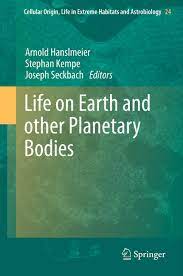
Life on Earth and other Planetary Bodies
Edited by A. Hanslmeier, St. Kempe, J. Seckbach
Publisher: Springer
ISBN: 978-94-007-9204-3
Summary: This volume has gathered 68 expert authors from around the world to discuss questions of life on Earth and elsewhere. Their chapters deal with primeval seas, the origin of the genetic code, panspermia, and terrestrial habitability. The target audience for this new book comprises scientists, microbiologists working with extremophiles, biology, geology students, teachers and general readers.
Read more about here.
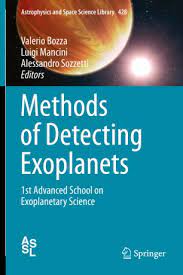
Methods of Detecting Exoplanets
Valerio Bozza
Publisher: Springer
ISBN: 9783319274560
Summary: Clearly describes the different techniques used to detect and characterize exoplanets. Explains the techniques’ advantages and limitations and their complementary roles. Meets the needs of researchers in planetary science looking to expand their knowledge of detection techniques.
Read more of the publisher’s summary here.
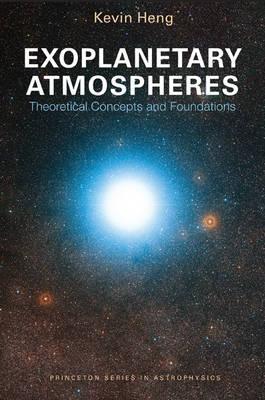
Exoplanetary atmospheres: Theoretical concepts and foundations
Kevin Heng
Publisher: 9780691166988
ISBN: Princeton University Press
Summary: Exoplanetary Atmospheres covers the physics of radiation, fluid dynamics, atmospheric chemistry, and atmospheric escape. It draws on simple analytical models to aid learning, and features a wealth of problem sets, some of which are open-ended. This authoritative and accessible graduate textbook uses a coherent and self-consistent set of notation and definitions throughout, and also includes appendixes containing useful formulae in thermodynamics and vector calculus as well as selected Python scripts.
Exoplanetary Atmospheres prepares PhD students for research careers in the field, and is ideal for self-study as well as for use in a course setting.
Read more about here.
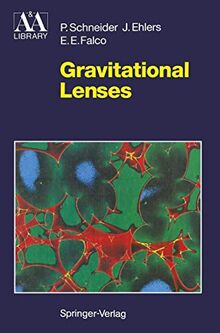
Gravitational Lenses
P. Schneider, J. Ehlers, E. E. Falco
Publisher: Springer Verlag
ISBN: 9780387970707
Summary: The theory, observations, and applications of gravitational lensing constitute one ofthe most rapidly growing branches of extragalactic astrophysics. The deflection of light from very distant sources by intervening masses provides a unique possibility for the investigation of both background sources and lens mass distributions. Gravitational lensing manifests itself most distinctly through multiply imaged QSOs and the formation of highly elongated im ages of distant galaxies (‘arcs’) and spectacular ring-like images of extra galactic radio sources. But the effects of gravitational light deflection are not limited to these prominent image configurations; more subtle, since not directly observable, consequences of lensing are the, possibly strong, mag nification of sources, which may permit observation of intrinsically fainter, or more distant, sources than would be visible without these natural telescopes.
Read more about here.
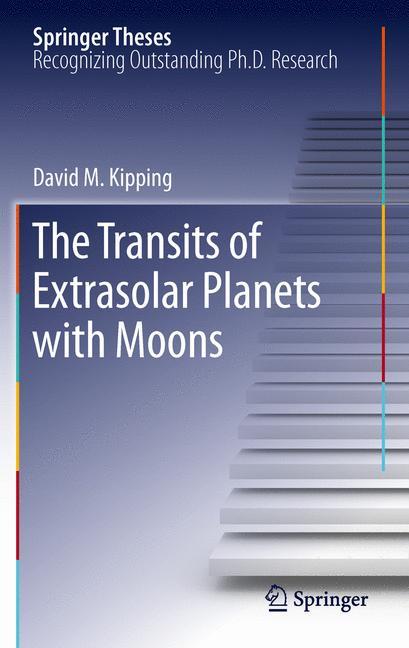
The Transits of Extrasolar Planets with Moons
David M. Kipping
Publisher: Springer Verlag
ISBN: 978-3-642-22268-9
Summary: Can we detect the moons of extrasolar planets? For two decades, astronomers have made enormous progress in the detection and characterisation of exoplanetary systems but the identification of an “exomoon” is notably absent.
In this thesis, David Kipping shows how transiting planets may be used to infer the presence of exomoons through deviations in the time and duration of the planetary eclipses. A detailed account of the transit model, potential distortions, and timing techniques is covered before the analytic forms for the timing
variations are derived. It is shown that habitable-zone exomoons above 0.2 Earth-masses are detectable with the Kepler space telescope using these new timing techniques.
Read more about here.
Popular science books
These are books on exoplanets for a wide general audience.
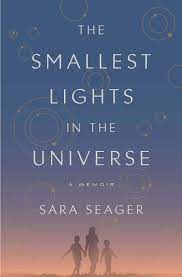
The Smallest Lights In the Universe: A Memoir
Sara Seager
Publisher: Crown
ISBN: 9780525576266
Summary: An MIT astrophysicist reinvents herself in the wake of tragedy and discovers the power of connection on this planet, even as she searches our galaxy for another Earth, in this “bewitching” (Anthony Doerr, The New York Times Book Review) memoir.
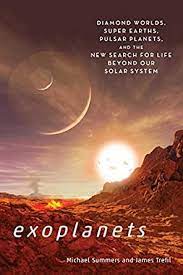
Exoplanets: Diamond Worlds, Super Earths, Pulsar Planets, and the New Search for Life beyond Our Solar System
Michael Summers, James Trefil
Publisher: Smithsonian Books
ISBN: 978158834594
Summary: Astronomer Michael Summers and physicist James Trefil explore these remarkable recent discoveries: planets revolving around pulsars, planets made of diamond, planets that are mostly water, and numerous rogue planets wandering through the emptiness of space. This captivating book reveals the latest discoveries and argues that the incredible richness and complexity we are finding necessitates a change in our questions and mental paradigms.
Read more about here.
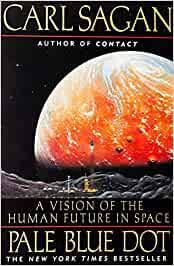
Pale Blue Dot: A Vision of the Human Future in Space
Carl Sagan
Publisher: Ballantine Books
ISBN: 978034537659
Summary: Pale Blue Dot: A Vision of the Human Future in Space is a book published in 1994 by astronomer Carl Sagan and a sequel to his 1980 book Cosmos, inspired by the famous 1990 Pale Blue Dot photo for which Sagan provides a poignant description.
Read more about here.

How to Find a Habitable Planet
James Kasting
Publisher: Princeton University Press
ISBN: 9780691138053
Summary: Kasting describes the efforts under way to find them, and predicts that future discoveries will profoundly alter our view of the universe and our place in it. This book is a must-read for anyone who has ever dreamed of finding other planets like ours – and perhaps even life like ours – in the cosmos.
Read more about here.
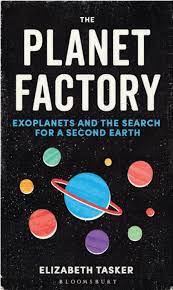
The Planet Factory: Exoplanets and the Search for a Second Earth
Elizabeth Tasker
Publisher: Bloomsbury Sigma
ISBN: 9781472917744
Summary: The Planet Factory tells the story of these exoplanets. Each planetary system is different, but in the beginning most if not all young stars are circled by clouds of dust. Planet formation is one of the greatest construction schemes in the Universe, and it occurred around nearly every star you see. Each results in an alien landscape, but is it possible that one of these could be like our own home world?
Read more about here.

Rare Earth: Why complex life is
uncommon in the universe
Peter D. Ward
Donald Brownlee
Publisher: Copernicus
ISBN: 978-0387952895
Summary: Rare Earth: Why Complex Life Is Uncommon in the Universe is a 2000 popular science book about xenobiology by Peter Ward, a geologist and evolutionary biologist, and Donald E. Brownlee, a cosmologist and astrobiologist. The book is the origin of the term ‘Rare Earth Hypothesis’ which, like the book’s authors, assert that complex life is rare in the universe.
Read more about here.
Books in German
Literature for a German-speaking audience.

Mensch und Universum
Brian Cox
Andrew Cohen
Verlag: Kosmos
ISBN: 978-3-440-15631-5
Zusammenfassung: Woher kommen wir? Ist unser Dasein reiner Zufall oder wurde der Kosmos für den Menschen geschaffen? Sind wir allein im Universum? Der Teilchenphysker Brian Cox und der Wissenschaftsredakteur Andrew Cohen gehen den großen Fragen unserer Existenz und unserem Platz im All in wissenschaftlicher Detektivarbeit auf den Grund.
Erfahren Sie hier mehr.

Unsere einsame Erde
Peter D. Ward
Donald Brwonlee
Verlag: Springer
ISBN: 978-3-642-56506-9
Zusammenfassung: Auf der Suche nach Leben im Universum nehmen die Autoren den Leser mit auf eine spannende Reise von den heißen vulkanischen Quellen des Ozeanbodens bis zu dem eisigen Antlitz von Europa, dem Jupiter-Mond. Dabei lernt der Leser, dass niedrig entwickeltes Leben vielleicht weiter verbreitet ist, als bisher angenommen, die Entstehung höher entwickelten Lebens aber zu komplex ist, um außerhalb der Erde stattfinden zu können.
Ein faszinierendes, erfrischend geschriebenes Buch, das auf dem neuesten Stand der Wissenschaft beruht.
Erfahren Sie hier mehr.

Die Neuentdeckung des Himmels – Auf der Suche nach Leben im Universum
Florian Freistetter
Publisher: Carl Hanser Verlag München
ISBN: 978-3-446-43882-8
Zusammenfassung: Florian Freistetter beschreibt, wie die moderne Astronomie erst lernen musste, das Unsichtbare zu sehen, um Supererden und Heiße Jupiter zu finden. Er erklärt, wie fremde Welten beschaffen sein müssen, damit auf ihnen Leben entstehen kann – und wie wir mit Hilfe neuer Teleskope bald herausfinden werden, wie Außerirdische wirklich aussehen.
Erfahren Sie hier mehr.
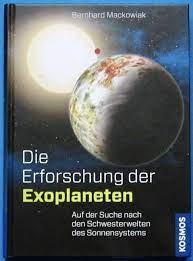
Die Erforschung der Exoplaneten: Auf der Suche nach den Schwesterwelten des Sonnensystems
Bernhard Mackowiak
Publisher: Kosmos
ISBN: 978-3-440-16259-0
Zusammenfassung: Gibt es auch Planeten in anderen Sternen? Erst 1995 konnte diese Frage mit “Ja” beantwortet werden. Seitdem wird mit großen Teleskopen und Raumsonden nach ihnen gesucht. Inzwischen sind fast 2.000 Exoplaneten bekannt. 20 Jahre nach der ersten Entdeckung zieht dieses Buch eine detaillierte Bilanz: Welche Arten von Exoplaneten sind bekannt, wie wird heute nach ihnen gesucht und warum ist es so schwierig, eine zweite Erde zu entdecken?
Books for children in German
Literature for a German-speaking young audience.

Licht an: Am Himmel und im Weltall
Verlag: Sauerlaender Verlag
ISBN: 978-3737357296
Altersgruppe: Kindergartenkinder, ab 4 Jahren
Zusammenfassung: Die Welt liegt im Dunkel, doch am Himmel leuchten die Sterne. Sieh genau hin, und du entdeckst den Großen und den Kleinen Bär/Wagen, den Polarstern und die Planeten! Erforsche die Tiefen des Weltalls mit deiner magischen Taschenlampe!
Mit Entdeckerfolien und magischer Taschenlampe. Altersgerechte, spannende Sachtexte und detailreiche Illustrationen. Enorme Haltbarkeit durch stabile Pappseiten und Ringbindung.
Erfahren Sie hier mehr.
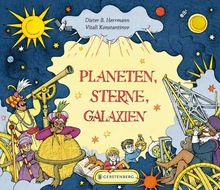
Planeten, Sterne, Galaxien
Dieter B. Herrmann
Vitali Konstantinov
Verlag: Gerstenberg Verlag
ISBN: 9783836957106
Altersgruppe: ab 6 Jahren
Zusammenfassung: Seit jeher übt der Sternhimmel eine große Faszination auf uns Menschen aus. Doch was genau ist eigentlich ein Stern, was ein Planet? Welchen Platz nimmt unsere Erde im Weltall ein? Und wie haben Forscher all diese Dinge überhaupt herausgefunden? Der Astronom Dieter B. Herrmann nimmt uns mit auf einen Streifzug durch die Galaxien und bringt kleinen Forschern das ferne Weltall ganz nah. In seiner fantasievollen Bildsprache fängt Vitali Konstantinov die “unendlichen Weiten” für uns ein und weiß gleichzeitig komplexe Zusammenhänge wie das Entstehen einer Sonnenfinsternis oder die Funktion eines Spiegelteleskops zu veranschaulichen.
Erfahren Sie hier mehr.
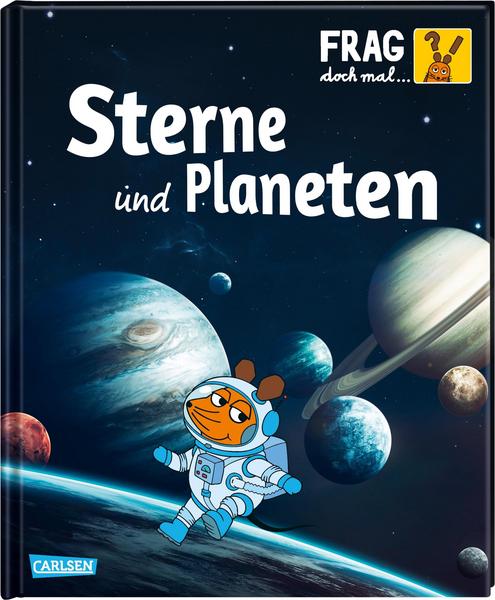
Frag doch mal… die Maus: Sterne und Planeten
Sylvia Englert
Johann Brandstetter
Verlag: Carlsen
ISBN: 978-3-551-25243-2
Altersgruppe: ab 8 Jahre
Zusammenfassung: Kinder wollen alles über ihr Lieblingsthema wissen und stellen oft Fragen, auf die Erwachsene keine Antwort haben. Zum Glück kann die Maus auch komplexe Sachverhalte kindgerecht und unterhaltsam erklären. Und genau das bietet diese Sachbuchreihe: kluge Antworten auf verblüffende Kinderfragen – spielerisch, sachlich fundiert und immer mit dem besonderen Maus-Faktor!
Erfahren Sie hier mehr.
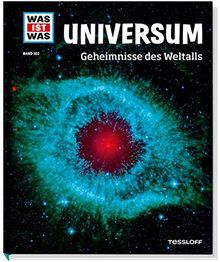
Was ist was: Universum – Geheimnisse des Universums
Verlag: Tessloff
ISBN: 978-3-7886-2094-3
Altersgruppe: ab 10 Jahre, auch für Erwachsene noch interessant
Zusammenfassung: Wenn wir den Nachthimmel mit all seinen funkelnden Sternen und dem leuchtenden Band der Milchstraße bestaunen, sehen wir nur einen kleinen Teil unserer Galaxie. Doch das Universum ist weitaus größer. Schwarze Löcher, strahlende Nebel und explodierende Sterne stellen uns vor große Fragen. Wie begann das Universum? Warum dehnt es sich aus und wie wird seine Zukunft aussehen?
Erfahren Sie hier mehr.
